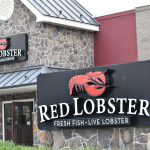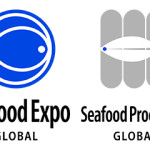Ireland’s seafood sector recorded its third consecutive year of growth in 2017, rising in value by 6.4 percent year-on-year to EUR 1.15 billion (USD 1.4 billion), thanks to a booming export trade, confirmed a new report compiled by the Irish Sea Fisheries Board Bord Iascaigh Mhara (BIM).
According to “The Business of Seafood 2017,” a 12 percent spike in net exports to EUR 331 million (USD 410.1 million), a four percent increase in domestic consumption at EUR 429 million (USD 531.6 million) and EUR 386 million (USD 478.3 million) of private and public investment led to the value of trade surpassing the EUR 1 billion (USD 1.2 billion) milestone for the first time.
“Ireland’s Seafood Industry is thriving," BIM CEO Jim O'Toole said. "Over the last two years, the contribution of the sector to Ireland’s GDP has grown by over 14 percent."
In terms of trade, the European Union remained Ireland’s main export market, valued at EUR 392 million (USD 485.7 million), an increase of nine percent year-on-year. France was its top market within the bloc, accounting for over aquarter of the E.U.'s total Irish seafood exports.
The report also found that Irish seafood saw double-digit growth in markets across Africa, Asia, and the Middle East.
Fish and shellfish landed into the country’s main fishing ports by Irish and non-Irish vessels rose by seven percent to EUR 401 million (USD 496.9 million) with Killybegs in Co. Donegal achieving the highest value of landings, up 24 percent to EUR 125 million (USD 154.9 million).
This growth was largely attributed to a 13 percent increase in mackerel landings worth EUR 83 million (USD 102.8 million). Some 78 percent of non-Irish landings, valued at EUR 118 million (USD 146.2 million) comprised of hake, monkfish, and megrim with 45 percent of these landings attributed to the French fleet.
Domestic consumption, meanwhile, was driven by salmon and cod, valued at EUR 96 million (USD 119 million) and EUR 48 million (USD 59.5 million) respectively, but BIM also highlighted growing demand for species such as pollock and hake.
Around the Irish coast, more than 14,000 people are employed directly and indirectly in the seafood sector. In addition to employment, seafood is a key driver in economic activity and in many cases is at the heart of the community, O’Toole said. In Donegal alone, the sector accounts for 12 percent of total coastal employment.
“Seafood processing companies are growing in number and now account for half of the total employment in the Irish seafood sector. The revenue and employment seafood delivers to our overall economy and directly to our peripheral coastal communities is invaluable,” he said.






